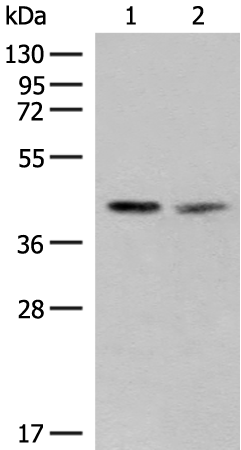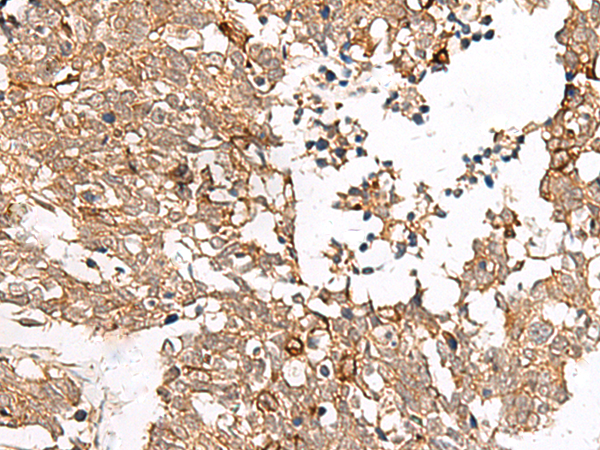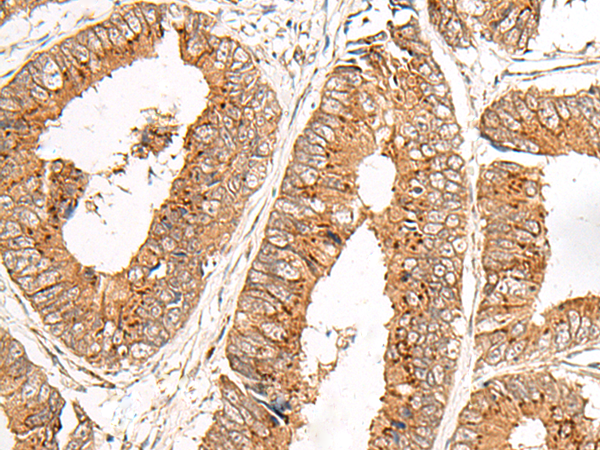


| WB | 咨询技术 | Human,Mouse,Rat |
| IF | 咨询技术 | Human,Mouse,Rat |
| IHC | 1/40-1/200 | Human,Mouse,Rat |
| ICC | 技术咨询 | Human,Mouse,Rat |
| FCM | 咨询技术 | Human,Mouse,Rat |
| Elisa | 1/5000-1/10000 | Human,Mouse,Rat |
| Aliases | NSE2; FAM84B; BCMP101 |
| WB Predicted band size | 34 kDa |
| Host/Isotype | Rabbit IgG |
| Antibody Type | Primary antibody |
| Storage | Store at 4°C short term. Aliquot and store at -20°C long term. Avoid freeze/thaw cycles. |
| Species Reactivity | Human |
| Immunogen | Synthetic peptide of human LRATD2 |
| Formulation | Purified antibody in PBS with 0.05% sodium azide and 50% glycerol. |
+ +
以下是关于LRATD2抗体的模拟参考文献示例(内容为假设性概括,建议通过学术数据库验证真实文献):
---
1. **"LRATD2 as a novel biomarker in hepatocellular carcinoma"**
*Author: Zhang Y, et al.*
**摘要**: 本研究利用抗LRATD2抗体通过免疫组化技术,发现LRATD2在肝癌组织中高表达,并与患者预后不良相关,提示其作为潜在治疗靶点的可能性。
2. **"Subcellular localization of LRATD2 using specific antibodies in neuronal cells"**
*Author: Smith J, et al.*
**摘要**: 通过抗LRATD2抗体的免疫荧光和Western Blot分析,揭示了LRATD2主要定位于神经元细胞的线粒体膜,可能参与调控细胞凋亡通路。
3. **"Functional characterization of LRATD2 in breast cancer progression"**
*Author: Lee S, et al.*
**摘要**: 研究利用LRATD2抗体沉默其表达,发现LRATD2通过调控Wnt/β-catenin信号通路促进乳腺癌转移,抗体用于体内外模型的功能验证。
4. **"Development and validation of a monoclonal antibody against LRATD2 for diagnostic applications"**
*Author: Tanaka M, et al.*
**摘要**: 报道了一种高特异性抗LRATD2单克隆抗体的开发,验证其在ELISA和流式细胞术中的灵敏度,为相关疾病的分子诊断提供工具。
---
**注意**:以上内容为示例性概括,实际文献需通过PubMed、Google Scholar等平台检索确认。建议使用关键词“LRATD2 antibody”或结合具体研究领域进一步筛选。
×